The Latest
|
Outsourcing: What to Consider When Supplementing Your Test and QA Capabilities[magazine] Companies outsource for a variety of reasons, with a variety of expectations. This article describes ways outsourcing can be successful, and reasons outsourcing may fail. This is an in-depth article that sets the stage and discusses numerous scenarios. |
Jim Bampos
June 26, 2002 |
|
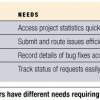 |
Tracking Down a Defect Management Tool[magazine] Selecting the right defect tracking solution for your business can be a high-pressure job. Choose badly, and you're stuck with an expensive tool that's not going to meet your needs. Choose wisely, and you're a hero. Read about how to rise to the challenge. |
Hung Quoc Nguyen
June 26, 2002 |
 |
Usability Testing[magazine] Observing users getting lost in an awkward application is easy; identifying, categorizing, and communicating those snags to your developers is the tricky part. Here's a proven method for success. |
Bob Stahl
June 26, 2002 |
|
At Your Service[magazine] A light and effective process with a service-oriented philosophy is key to meeting your organization's needs. Here are eight simple steps for creating a software engineering team that will turn customers into fans. |
||
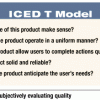 |
How Good Is This Software?—A Model to Measure Subjective Data[magazine] How do you really know how good your software is? Many traditional measures only look at the quantitative aspects of quality. Here's a model to measure and analyze subjective—or qualitative—data about software quality. |
Andy Roth
June 26, 2002 |
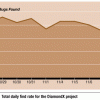 |
Meaningful Metrics[magazine] Your numbers are solid and your graphs are works of art. Now boost your metrics' value through the roof with some simple annotations that will put all that data in context. |
Anna S. W. Allison
June 26, 2002 |
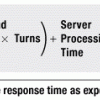 |
Web Page Response Time 101: A primer[magazine] Online sites lose billions of dollars every year due to sluggish performance speed and user bailouts. Here are four laws of Web site performance that will help you understand response times and deal with your "abandonment issues." |
Alberto Savoia
June 26, 2002 |
 |
Orthogonally Speaking: Deriving a Suitable Set of Test Cases[magazine] Is your testing effort facing an impossibly wide choice of test parameters? Shooting in the dark can yield hit-and-miss results--and that’s just not very effective. When your testing effort faces an impossibly wide choice of test parameters, the Orthogonal Array Testing System technique can be a very useful method for deriving a suitable set of test cases. |
|
|
The Human Side of Process Improvement[magazine] Interpersonal relationships can make the difference between effective and ineffective technical initiatives. Here are ways to address this frequently neglected aspect of organizational change. |
Judah Mogilensky
June 26, 2002 |
|
|
Matching ISO 9000 Registration to Your Organization[magazine] The chances of getting use from your ISO 9000 certification are greatly enhanced by a registration effort that reflects the real goals and operating principles of your organization. Here are some lessons on how to tailor your effort. |
Mark Johnson
June 26, 2002 |
|
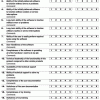 |
Customer Satisfaction: What to Ask, How to Ask, and Who to Ask[magazine] Improving customer satisfaction should be a primary goal of process improvement programs. So how satisfied are our customers? One of the best ways to find out is to ask them. Here are techniques for creating a useful survey and interpreting the results. |
Linda Westfall
June 26, 2002 |
|
Escaping the Clutches of Zombie Projects[magazine] Timely and accurate information is often your only silver bullet against interminable and doomed projects. Learn how to deliver bad news in such a way that Senior Management hears it and acts promptly. |
||
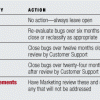 |
Organize Your Problem Tracking System[magazine] Do you have a bug database or defect tracking system? Whether you call them PRs, CRs, SPRs, or some other acronym, logging your software problems into a database rates as one of the simplest yet most effective things you can do to improve product quality. Sometimes these databases turn into the electronic equivalent of a “roach motel” trap--the bugs go in but they don’t come out! |
Barry Mirrer
June 26, 2002 |
|
Looking Under the Hood[magazine] Understanding a program's inner workings, dataflows, and bug history can enable you to build more robust tests. Here are pointers on investigating a system's internal design as a tool for effective testing. |
Len DiMaggio
June 26, 2002 |
|
 |
Juggling Concurrent Releases[magazine] Every day you are faced with juggling resources and attention between customer escalations, current development projects, and planning for the future. With development cycles measured in weeks, you have at least three releases for each product. Multiply that by the number of projects under your responsibility, and you have a dozen or more releases to manage simultaneously. |
Neal Reizer
June 26, 2002 |



